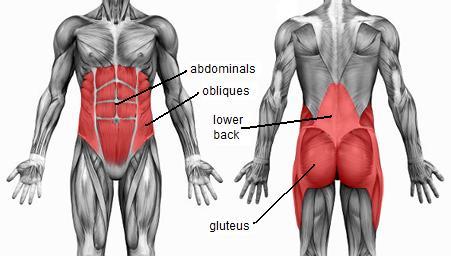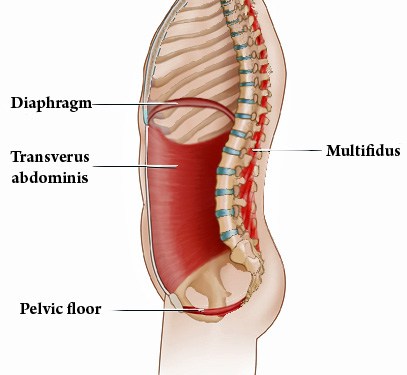Your core is one of the most vital groups of muscles for not just longterm physical health and injury prevention, but also for athletic performance in just about all aspects. It creates the stability in your spine, pelvis, and torso for your limbs to be able to move with coordination and power. It provides the power in bending forwards and extending through your spine, as well as dynamically rotating your body or resisting rotation forces. It creates your abdominal ‘brace’ and maintains the pressure within your abdomen to be able to lift, twist, and perform many other movements without injury. Problems with your core can be a significant factor in pain and tightness around your back, hips, and with breathing.
When people think of core muscles, typically the ones that spring to mind are abs and maybe obliques, and as such these are the ones that tend to get targeted for exercise the most. The core is in fact made up of a much greater number of muscles. Including the rectus abdominus (abs) and obliques, the other most important muscles involved are your pelvic floor, transversus abdominus, muscles of your lower back (quadratus lumborum, multifidus, extensors and small rotators), and diaphragm. There are others involved a bit further away from your “core” region, but these make up the main group responsible for core function.

The best way to think about your core is as a vertical cylinder – with muscles wrapping front-to-back around your spine and abdominal organs, and sealed below by your pelvic floor muscles and above by your diaphragm. All of these muscles work together to create motion and stability.

Because of their close functional relationship, when there is an issue with one core muscle, there is almost always compensatory issues in another. For example, if one is weak others must overwork to pick up the slack, or if one is tight and overactive, this can turn off corresponding muscles in your core and make strengthening them extremely difficult.
Rather just targeting your abs for summer, here are some great exercises that will strengthen your core functionally and improve some common issues many people have with core muscle imbalances and motor control patterns: (See video below)
Dead Bug
Draw your lower ribs in and down towards your pelvis, flattening your lower back against the floor, and hold this position throughout. You can progress from alternating kicks with hands placed on a wall or with weight, to leg extension, to a combination of legs and arms together. Only progress when you can maintain your ribs down and lower back flat.
Single Arm Kettlebell Dead Bug
This creates more rotational stress on your core and forces your rotary muscles to stabilise your torso. Same principles as regular dead bug. Move your arms further apart to increase the rotational difficulty.
Front Plank, Side Plank, and Hip Dip
Keep your body in a straight line from your heel to your head. Like the dead bug, draw your lower ribs and pelvis towards each other at the front while maintaining that straight line.
With side plank, maintain a straight line from between your feet, through your belly button, and to your nose. Make sure your hips are square and facing forwards. Push your supporting shoulder down towards the ground. When introducing the hip dip, go slow and ensure your hips face forwards with no rotation.
With each type of plank, squeezing your glutes and pulling your elbows down towards your body will increase the tension on your core.
Row the Boat
Keeping your balance, draw your ribs and pelvis together. When stable, rotate to each side, bringing your hands to your outside hip. This can be done with weight.
Quadratus Lumborum muscle (Q.L.) ball release
These are 2 of the most common overactive muscles of your core that can be involved in stopping other core muscles from activating properly.
On your back, move the ball (something hard and about the size of a cricket ball is ideal) to a tender spot between your lower ribs and top of your pelvis and lie on it. Use your hands to pull the same side knee up towards your chest. You’ll feel the ball press harder into your back. Move your knee up and down and across your body. After 20-30 seconds, move the ball to a different spot and repeat a few times.
